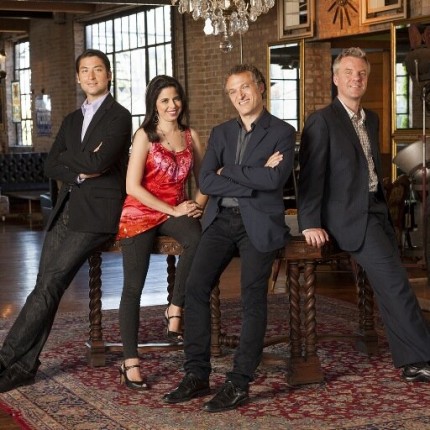Pacifica Quartet offers Ran premiere in Logan Center program

The Pacifica Quartet celebrated their 20th anniversary with a concert at the Reva and David Logan Center for the Arts Sunday afternoon presented by the University of Chicago Presents series.
The concert opened with a performance of Felix Mendelssohn’s String Quartet in F minor, Opus 80. Mendelssohn is often treated as a polite and elegant composer, more Classical in his leanings than his red-blooded Romantic contemporaries. The Pacifica Quartet took the opposite approach in their rendition, playing in a grandly Romantic style that was evident from the shuddering tremolos of the opening bars.
They were not afraid to manipulate the tempo in the first movement, accelerating swiftly towards the climax of the development and then slamming on the brakes at its peak. First violinist Simin Ganatra applied effective touches of portamento to her generously phrased solo that opened the slow third movement. The Scherzo came off best of all, with pungent accents and rapid dynamic shifts that captured the conflicting senses of agony and humor in the movement. It was a tense and riveting performance of music that is too often treated as light and easygoing.
The second item on the program was the U.S. debut of Shulamit Ran’s third string quartet, titled Glitter, Shards, Doom, Memory, of which the Pacifica Quartet gave the world premiere earlier this year.
At a time at which contemporary Classical music is criticized for its inaccessibility to audiences, Ran’s quartet is admirable for its emotional directness. It is almost Romantic in its clarity of gesture. There is never a haze of sound; there is always a strongly characterized figure being worked out, and each movement breaks down into well-defined sections with instantaneously palpable emotional arcs.
Ran also has a keen sense of sonority, which is explored effectively throughout the piece. For example, the second movement ends with the players stamping their feet, followed by the second violinist whistling while the others all play col legno (scraping the strings with the wood of their bows). There can be little doubt that musically, this piece is beautifully and thoughtfully crafted.
The difficulty of the piece lies in the relationship between the music and its subject matter. As Ran’s program notes explain in some detail, Glitter, Shards, Doom, Memory was inspired by aspects of the Holocaust, and in particular, the work of the painter Felix Nussbaum who perished. The first movement of the quartet—which is titled “That which happened” after the poet Paul Celan’s phrase for the Holocaust—is meant to reflect how daily life was (in Ran’s words) “shockingly, inhumanely, inexplicably shattered.” But the episodes that interrupted appearances of a tender, folk-like melody were not particularly shocking or shattering. Their harshness was equal to or less than that which is ordinarily deployed in much contemporary music, even when representing much less harrowing events.
The program notes liken the second movement, “Menace,” to the unstoppable Nazi “death machine”. Yet, the music of this movement and its performance by the Pacifica Quartet took turns that were lyrical, melodious, and at one point even humorous. The traditional impish spirit of a scherzo seemed preserved, in a context in which this is unexpected.
At the concert’s conclusion, the performers chose to play the second movement again as an encore, a decision that was greeted with sounds of approval from the audience. What does it mean for a piece to evoke the death camps, but to do so attractively enough that an audience is not merely prepared to re-experience it soon afterwards, but is actually eager to do so?
Maybe the answer lies in Ran’s emphasis on art and memory’s capacities to serve as a “triumph of human spirit over annihilation.” There is something bold about commemorating history’s greatest ugliness with beauty rather than with more ugliness, which would be the expected musical response. If the music does little to convey the inhumanity of the Holocaust’s horrors, which are referred to so often in the program notes, perhaps this is because it does so much to communicate the humanity of those who struggled and died.
The last item on the program was Beethoven’s String Quartet No. 8 in E minor, the second of his Op. 59 “Razumovsky” quartets. The Pacifica Quartet’s performance maintained all the virtues of their performance of the Mendelssohn: alert rhythms and phrasing, great flexibility, and pinpointed spotlighting of particular lines. Their ability to sustain the lengthy Adagio was particularly fine. If there was a weakness to the performance, it lay in their repetition of certain expressive tricks. Their thrilling execution of Beethoven’s accelerando in the coda would have made greater impact had they not overused the device throughout the concert, at times when it wasn’t in the scores.
Posted in Performances


